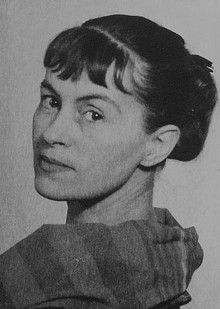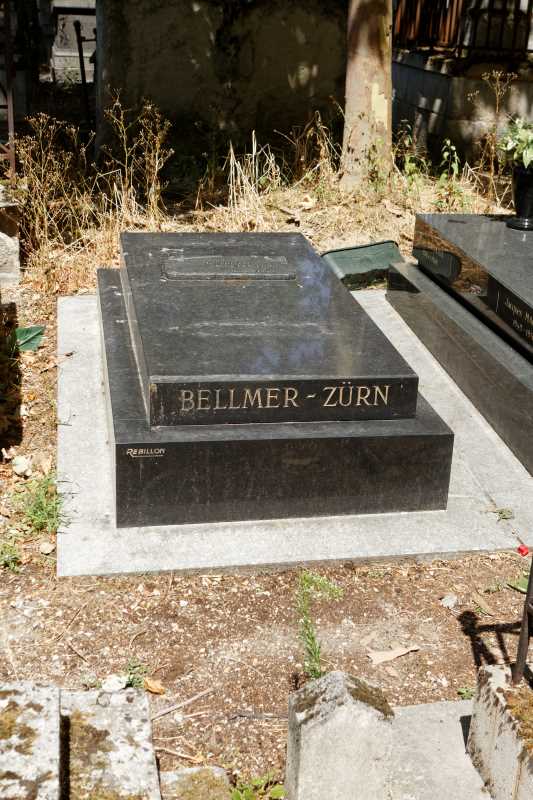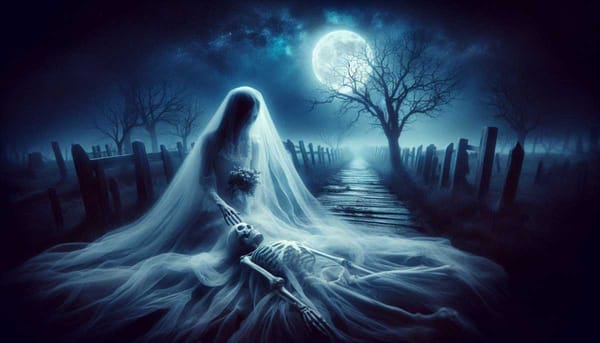Unica Zürn's Love, Madness, and Art with Hans Bellmer
Unica Zürn, a German artist and author from the 20th century, is often overlooked in the European avant-garde community. Her life, marked by emotional tumult, provocative creativity, and haunting insights into eroticism and rebellion, paints a vivid picture of her psyche.

Unica Zürn (1916-1970), the German author and artist, rests in the shadows of the European avant-garde, her works and life teeming with tumultuous emotion, provocative creativity, and haunting glimpses into the realms of eroticism and transgression. Raised in Grünewald, Berlin, Zürn’s childhood was a tableau of overt adult liaisons and familial discord. Her contributions, notably in “Grim Spring” and “The Jasmine Man,” serve as autobiographical narratives depicting her harrowing experiences and complex relationships, painting her as a compelling, albeit, unjustly overlooked figure in avant-garde literature.
In the big house of her childhood, the absence of her adored father was conspicuous, leaving room for her mother’s lovers to traverse the household with unmasked indiscretions. Zürn witnessed the intertwining of bodies and desires, her young mind molding the scenes into images of monstrous spiders, symbols of the tormenting eroticism that dwelt in her house. The haunting image of “a mountain of warm flesh” became a symbol of her mother's unabated desires, Zürn running from this figure, desperate for an escape from the relentless throes of human wants.
The sensual and tortured aesthetics of Hans Bellmer, with whom Zürn would later become entangled, echo the fragmented realities of Zürn's life. Bellmer’s dislocated mannequins, which were products of the pre-Nazi era in Berlin, found a paradoxical abode in Zürn's psyche, eliciting both abject pleasure and profound sadness. A photograph by Bellmer titled “Tenir au frais” depicted a woman, tightly bound, her flesh deformed, symbolizing the manipulation and overflow of human forms and desires.
Zürn’s tapestry interwove with that of Bellmer, her model, in the bohemian circles of Paris. Her form, remodeled and reassembled by Bellmer's artistic expressions, served as a harsh reminder of the bound and broken bodies in his photographs. Zürn’s own works, ranging from ink drawings to illustrated anagrams, watercolors, and oil paintings, depicted multiform creatures, reflecting her anguish and fantasies.
Zürn’s journey through madness, cruelty, and eroticism was, intriguingly, a reflection of André Breton's misinterpreted connection between creativity and madness. Breton, the surrealism pioneer, often conflated the delirium of madness with the liberating forms of imagination, seemingly overlooking the harrowing loneliness and terrifying realities of the truly mad. To truly comprehend the expressions of a mind marred by madness, one needs to unfreeze their own hidden insanities, a place that Breton seemingly romanticized yet never truly inhabited.
The Enigma of the Jasmine Man
In the tenuous expanse where an open mouth, stricken with dread, pauses—unable to emit a scream, we find Unica transfixed by the haunting image of the ‘jasmine man’. In the lingering moments following her escape from her mother’s room on a day stained by injury, Unica beholds him, confined to a wheelchair in the garden. “Paralyzed! Fortuitous!” she exclaims, comforted by the notion that he will never vacate his garden seat.
The jasmine man’s steadfast presence serves as a poignant reminder of two enduring lessons for Unica: Distance and Passivity. Unlike the painful images of the past, this vision belongs solely to her, allowing her to control its proximity and remoteness. Zürn labels this benign vision as the symbol of love, contrasting significantly with the scars left by prior traumatic visuals. Even when people attempt to unlock her memories, she remains impervious and discarded, akin to an insignificant box deemed futile.
It is not until years later that another man disrupts her serenity, occurring just before her departure from Paris and her initial separation from Hans Bellmer. Inside the secluded space of Hotel Minerva, Unica encounters, whom she perceives as the living double of the jasmine man. This tangible version of her blue-eyed vision is identified as the poet Henri Michaux, whose beauty she finds unparalleled.
Unica’s interaction with Michaux resonates with a profound intensity, marking the inception of her gradual descent into mental turmoil. She accredits Michaux with the enigmatic power of distant hypnosis, allowing his voice— a voice she has assimilated, to navigate her delusions and actions. The mere echo of “Ping! Ping! Ping! Ping!” plunges her into a trance-like state.
In the realm of surrealism, ‘amour fou’ describes the unforeseen convergence of two individuals, which, while blissful, begets calamity and introduces irreversible alterations in their existences. Unica’s love is steeped in madness, as she materializes the image, offering it a corporeal existence. With this newfound embodiment, the voice infiltrates, commanding and she, compliantly, executes. The jasmine man, now autonomous, dictates her actions, and she willingly fulfills them, showcasing a love of monumental proportions.
Her surreal love appears to transcend reality, surpassing the constraints of surrealistic paradigms. Unica, haunted by visions and manipulated by the voice of her enigmatic love, embodies a surreal existence marked by dichotomies of bliss and destruction, control and surrender.
Unica’s journey with the jasmine man and her ensuing encounter with Michaux elucidates a complex relationship between vision, reality, and love within the framework of surrealism. It signifies the incessant battle between passivity and action, between the tangible and the intangible, emphasizing the profound impact of visions on one’s psyche and existence. The allure of the jasmine man, conjoined with the hypnotic influence of Michaux, illustrates the profound and unsettling implications of 'amour fou', rendering Unica a compelling figure in the exploration of surrealistic love and existence.

A Tale of Love and Delirium
In the serene solace of her garden, where time danced with the whispering winds and blooming flowers, she encountered the Jasmine Man, a mystifying figure shrouded in intoxicating allure. His unexpected apparition marked the inception of an unspoken love contract, allowing her eyes to eternally seek him over the shoulder of transient lovers, her gaze interlocked with his inaccessible existence.
Her world, once veiled in the normalcy, became imbued with a unique delirium the evening she met the tangible double of the Jasmine Man in the city of love, Paris. This confluence brought the prospect of consummating her innocuous nuptials to life. Subsequently, she penned her thoughts in “In the house of the sick,” reflecting the constricting norms imposed by Dr. Mortimer, the presiding doctor. According to him, desire is the forbidden fruit, the abyss of health, collapsing the celestial illusions we harbor. Stripped of the stars in her eyes, she was now bound to incessantly gaze to the left, towards her silent assailant.
As the Royal Jasmine Man emerged, her meticulously erected walls of distance and impassivity crumbled, unveiling her long-concealed wounds. Every glimpse of him, a striking violation, echoed the initial intrusion into her mother’s room. The relentless reenactment of the past becomes a vain pursuit to vocalize her unuttered words, encapsulating her in an eternal struggle between revelation and concealment.
The man, a living paradox, born in '99 and awakened in '66, epitomizes the chaotic distortion of time. He, knowledgeable of the timeless anarchy, is poised to plunge with '66 into the boundless eternity. This transmutation of his universe marks the inception of her complex delirious numerology. In this newfound reality, the convergence of the two 9s is depicted as an embodiment of unity and love, their existence intertwined, forming the silhouette of a heart. The manifestation of signs and the reincarnation of the Jasmine Man in Henri Michaux illustrate the physicality of abstract concepts, paralleling the reality imprinted by the 69 on the morning of her wounding.
Her profound revelations transcend the bounds of sanity, painting the intricate tapestry of mathematics with the vivid hues of beauty and depth. “I feel as if in a circle,” she declared to a companion, met with a skeptical, “I don't believe in the circle.” Her journey unfolds as a harmonious dance between delirium and reality, between the tangible and the ethereal, sketching the contours of her existence with the enigmatic brushstrokes of the Jasmine Man.
Dance of Transformation Beyond Reality
Amidst the veiled realm of shadows and light, where art intertwines with existence, a dancer named Zürn unveils the mystical tapestry of her being. One fateful night, she finds herself alone, centered on an unlit stage. Her surroundings are drenched in a reality that is neither a mere fragment of her imagination nor a concocted hallucination, but a vivid image stemming from the deepest layers of her soul.
Zürn, enveloped in the embrace of alien melodies and the harmonious echoes of unknown instruments, experiences an irresistible yearning to materialize a childhood dream teeming with despair and hope— to immerse herself in the world of dance. She stands poised, a silhouette against the darkness, unsure of the inaugural move she ought to perform. However, she senses a presence, a guiding entity in the shadows who would mold her movements, leading her through the rhythm like a maestro refining his protegé.
She submits to the unseen conductor's whisper, her limbs coiling and extending, her neck elongating, intertwining with her delicate fingers, her arms entangling in a dance of surreal fluidity. As she transcends through sequences, her visage dissolves into a chaotic fusion of limbs, portraying a distressing and grotesque spectacle. Zürn experiences a metamorphosis, her arms and fingers transforming into a bird, a silent representation of her subliminal being, garnering the applause of an invisible audience.
A voice resonates, murmuring, “The tiger, the tiger is coming.” Zürn, engrossed in contemplation, merges her being with the essence of the tiger. The fusion is so intense that fear infiltrates her core, and she perceives the necessity to depict not only the terror-infusing predator but also the trembling prey. The innocent animals in frightful retreat before the impending doom of the tiger’s pursuit. The representation of her body, a tableau of various fleeing creatures, brands her as the supreme mime of her generation. Zürn then ponders whether, as the final crescendo to her performance, she must, as the tiger, launch herself upon the audience, symbolizing both the pursuer and the pursued. The voice negates.
The climax of her metamorphic journey sees her embodying a scorpion, her legs and feet morphing into a lethal, sharp sting. It arches gracefully, threateningly poised above her solar plexus. “What cruelty, what diabolical scheming to press her to plunge her sting into that shining whiteness!” she muses.
The visions Zürn experiences transcend hallucinatory realms; they are not mere impersonations but metamorphoses symbolizing her cyclical dance with her dual selves, the wounded monster and the wounded healer. Her dance is a transcendental ritual, a labyrinthine journey between creation and abyss, painting the canvass of reality with the hues of her transformative essence.
Unica Zürn, Hans Bellmer and the Game of Two
The game of two is symbolically depicted as a circle—a continuum representing the ongoing and the endless, with no discernible beginning or end. Unica Zürn and Hans Bellmer, two individuals who intertwined themselves in this endless game, crafted a complex relationship, embodying this infinite loop in both life and death.
In 1953, in the remnants of a post-war Berlin, Unica Zürn found herself encapsulated by the allure of a male actor's face in a film, repeatedly drawn to it. This magnetic attraction seemed to radiate a mirroring effect, prompting remarks about her resemblance to the actor. Intriguingly, Zürn perceived the reflection of her visage and the actor's in Hans Bellmer. Bellmer—a surrealist artist, invited Zürn into his world, introducing her to the esoteric art of anagrams and automatic drawing and acquainting her with eminent figures like André Breton, Max Ernst, Marcel Duchamp, and Man Ray.
Bellmer found a muse in Zürn; she, the living embodiment of his surrealist perceptions—“elle est la poupée,” he would say, enunciating his view of her as a doll to his surrealist counterparts. For Bellmer, Zürn became an amalgamation of inspiration and desire, her body a canvas depicting knots of deformed limbs, reflecting the intense and twisted entanglement of their lives.
Zürn, in her union with Bellmer, seemed to have lost her individual essence, becoming a segment of a united entity, a singular body tethered together in an intertwining dance of relationships. Their interactions stripped Zürn of her pleasant aspects, shaping her into Bellmer's idealized model, bound and constricted, resembling a grotesque and distressing dance.
It was during her periods of separation from Bellmer that Zürn faced states of overflowing, risky euphoria. She felt detached from reality, caught in a whirlwind of unseen forces, and it seemed Bellmer was the singular entity that could comprehend her chaotic state. This interconnectedness came at the expense of her autonomous existence—living with him became a prerequisite for his care and understanding.
The stark implications of their profound connection were apparent in their turbulent lives. Zürn's existence with Bellmer was marked by numerous clandestine abortions, attributable to his aversion to contraception, and she was bound to him, both metaphorically and physically, with ropes so tight they seemed to cut into her flesh.
Tragically, Unica Zürn ended her tumultuous journey by succumbing to the void, falling from the window of the shared apartment with Hans Bellmer. Bellmer, in his mourning, vowed to follow her for eternity, engraving this promise on a wreath during her burial. The eternal circle came to its symbolic completion when Bellmer was laid to rest beside Zürn, their graves sharing the eternal vow.

A Game with No End
The journey of Unica Zürn and Hans Bellmer embodies the symbolic circle of the game of two—a game with no beginning and no end, just an ongoing spiral. Their lives were intertwined in an intricate dance of love, passion, and torment. The intensity of their union radiated through their arts and existential states, making their entangled existence a living portrayal of the eternal, unbroken circle—the game of two.
This complex tapestry weaves a story not just of two artists, but also of their unrelenting bond. A fusion of identities that challenged the very notion of individual existence, blurring the lines between the self and the other, manifesting in a hauntingly beautiful, albeit distressing, eternal dance.
In-Text Citation: Negri, Ana. ‘La Vida Circular de Unica Zürn | Ana Negri’. Revista de La Universidad de México, https://www.revistadelauniversidad.mx/articles/a81cc4c0-5713-4c49-bb56-1196c7d3ee41/la-vida-circular-de-unica-zurn. Accessed 22 Sept. 2023.




